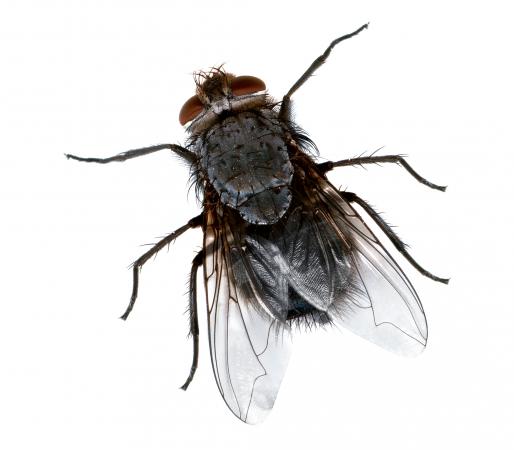导读:日本研究人员发现,被长期饲养在黑暗环境中的果蝇,促解毒的基因会出现变异。他们认为,果蝇有可能通过增强对毒性的抵抗力,更加适应在黑暗环境中生活。

被长期饲养在黑暗环境中的果蝇,促解毒的基因会出现变异
日本研究人员在新一期美国在线杂志《公共科学图书馆—综合》上发表论文说,被长期饲养在黑暗环境中的果蝇,促进解毒的基因会出现变异。他们认为,果蝇有可能通过增强对毒性的抵抗力,更加适应在黑暗环境中生活。
果蝇本是一种昼行性昆虫,为了调查生物对环境的适应能力,京都大学从1954年开始,一直在黑暗环境中饲养果蝇,已培育了约1400代。在本项研究中,京大研究员布施直之率领的研究小组解读了20只雄性果蝇的基因组,然后与普通果蝇进行比较。他们发现在约1.4万个基因中,有241个出现了变异并被遗传下来。而在出现变异的基因中,有很多负责合成酶以排出进入果蝇体内的毒素。研究小组认为雌性果蝇体内存在同样的变异。
此外,研究人员在调查果蝇寿命时,发现普通的雌性果蝇在产卵后或突然被放到黑暗处饲养寿命会缩短,但是长期在黑暗中生活的果蝇,产卵后也能存活很长时间。布施直之指出:“对黑暗环境和毒性的耐受性可能与寿命有关。”
研究小组准备进一步调查基因变异的影响,弄清变异的机制。日本国立遗传学研究所和美国哈佛大学的研究人员也参与了这项研究。

 Genome Features of “Dark-Fly”, a Drosophila Line Reared Long-Term in a Dark Environment
Genome Features of “Dark-Fly”, a Drosophila Line Reared Long-Term in a Dark Environment
Minako Izutsu,
Organisms are remarkably adapted to diverse environments by specialized metabolisms, morphology, or behaviors. To address the molecular mechanisms underlying environmental adaptation, we have utilized a Drosophila melanogaster line, termed “Dark-fly”, which has been maintained in constant dark conditions for 57 years (1400 generations). We found that Dark-fly exhibited higher fecundity in dark than in light conditions, indicating that Dark-fly possesses some traits advantageous in darkness. Using next-generation sequencing technology, we determined the whole genome sequence of Dark-fly and identified approximately 220,000 single nucleotide polymorphisms (SNPs) and 4,700 insertions or deletions (InDels) in the Dark-fly genome compared to the genome of the Oregon-R-S strain, a control strain. 1.8% of SNPs were classified as non-synonymous SNPs (nsSNPs: i.e., they alter the amino acid sequence of gene products). Among them, we detected 28 nonsense mutations (i.e., they produce a stop codon in the protein sequence) in the Dark-fly genome. These included genes encoding an olfactory receptor and a light receptor. We also searched runs of homozygosity (ROH) regions as putative regions selected during the population history, and found 21 ROH regions in the Dark-fly genome. We identified 241 genes carrying nsSNPs or InDels in the ROH regions. These include a cluster of alpha-esterase genes that are involved in detoxification processes. Furthermore, analysis of structural variants in the Dark-fly genome showed the deletion of a gene related to fatty acid metabolism. Our results revealed unique features of the Dark-fly genome and provided a list of potential candidate genes involved in environmental adaptation.
文献链接:https://www.plosone.org/article/info:doi%2F10.1371%2Fjournal.pone.0033288







